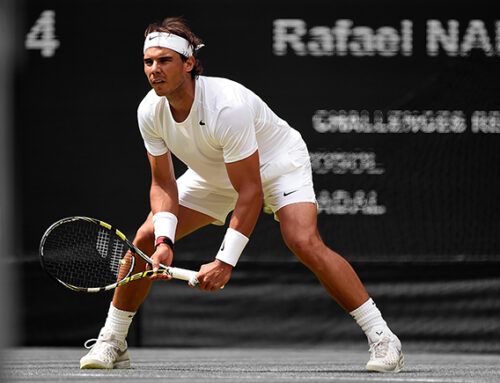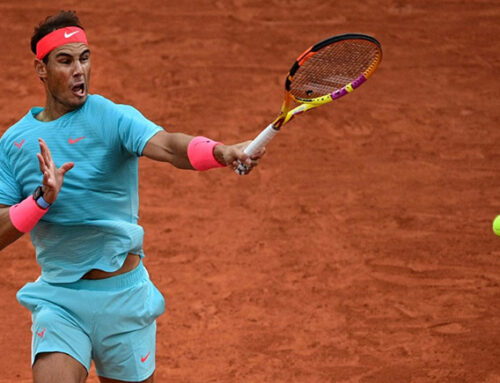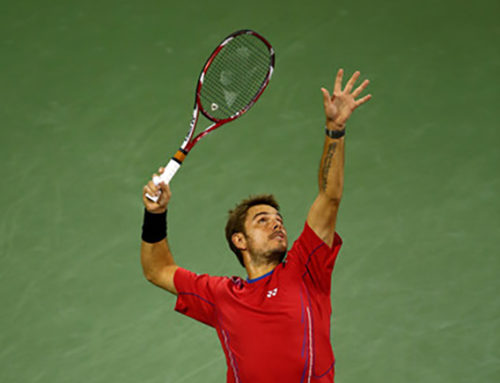Keeping and Losing Control of the Point
Tennis is, in essence, a game of high-speed, athletic chess. Decisions are made in fractions of a second while sprinting full-speed across the court. Mistakes are punished mercilessly. At the lower levels, those mistakes are obvious – errors that result in the immediate loss of the point. A forehand sent long for seemingly no reason, a backhand volley dumped into the net. As the level becomes higher and higher, the mistakes become more subtle. A mistake becomes, not an unforced error but a ball taken down the line too soon, a slice backhand hit when a topspin was needed. Certainly even the best of pros still make unforced errors. However the discerning viewer can see top players jockeying for position, a delicate game of cat and mouse played with ferocious, explosive violence.
When Roger Federer took the court against Feliciano Lopez in the 2017 US Open, the tale of the tape weighed heavily in Federer’s favor. Feliciano’s serve is certainly one of the better deliveries on the tour, and his forehand and volleys are truly formidable. However in virtually every aspect of tennis, Federer has the edge. From the baseline, Federer’s forehand is better than Lopez’s forehand, and Federer’s backhand is better than Lopez’s backhand. But Feliciano Lopez is left-handed, so the tactical battle from the baseline becomes interesting. Because though Federer may have the better forehand, Lopez’s forehand is certainly better than Federer’s backhand.
In today’s article we will put a single point from the Federer-Lopez match under the microscope. Funnily enough, it is the first point of the entire match. In this one point however, we can see the subtle struggle for power. Each player works to put his own strengths in play, and gain the matchup he wants at the expense of his opponent. It provides a fascinating window into the types of decisions that high-level players make, and also just how often even these great athletes are making tactical errors.
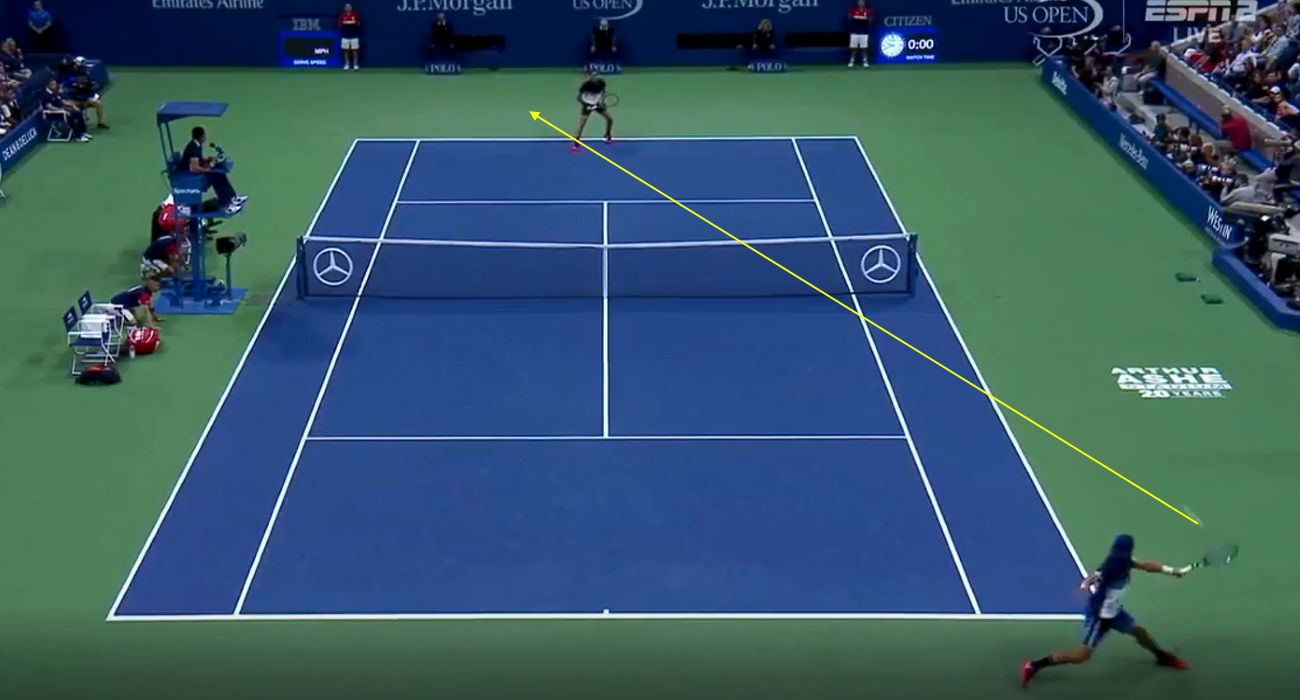
The point begins with a Federer serve. Federer’s desire and ability to open the point with a forehand after his serve is well documented. Federer’s goal is to earn a shorter ball off the serve, and finish the point in one or two shots. This is his plan A against everyone. In this case, Lopez floats a slice return relatively deep towards the middle of the court. The return is deep enough that Federer cannot immediately attack and end the point – he is pushed back behind the baseline and slightly off-balance.
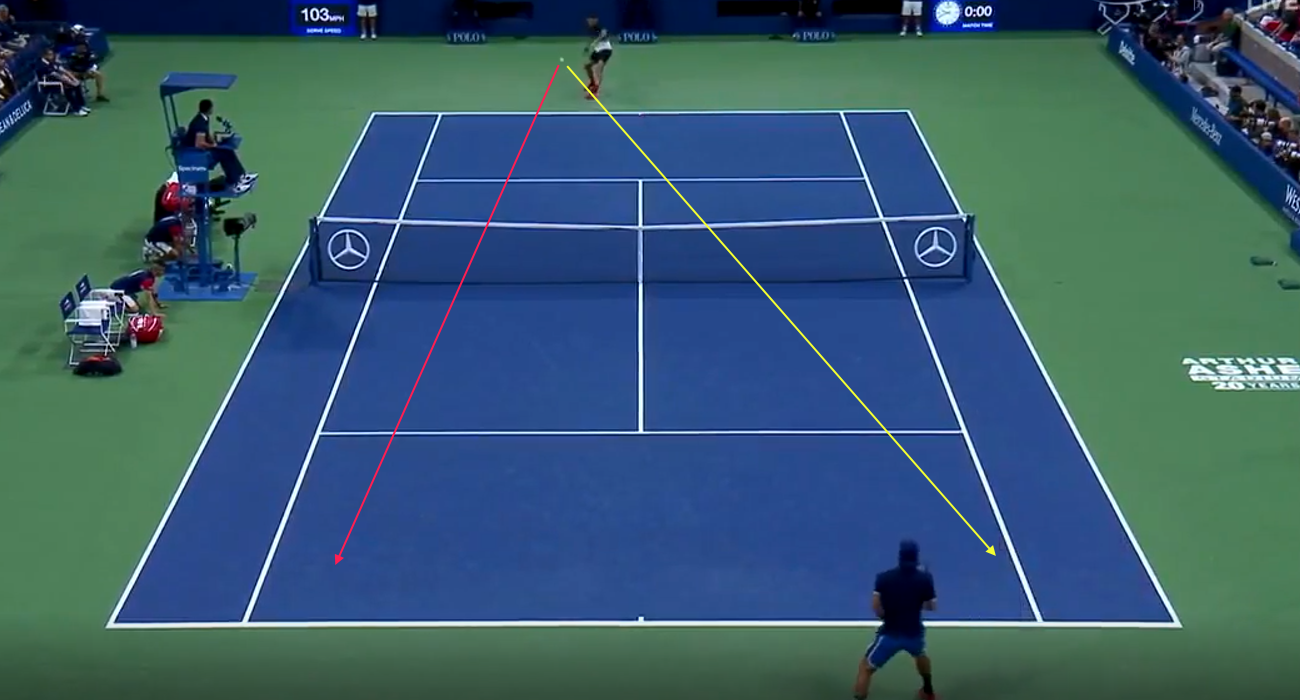
The depth of Lopez’s return means that Federer must immediately move to his plan B – which in this case means working his forehand against Lopez’s backhand to earn an attacking opportunity. Could he take this first forehand into the open court? Yes, but doing so would not likely put Lopez on the defensive. Because he is on his back foot, Federer would struggle to hit his forehand with any authority. So if Federer were to take his forehand on the red line he would be giving up the initiative – effectively handing control of the point over to Feliciano. And so Federer hits along the yellow line, directing play into Lopez’s backhand.
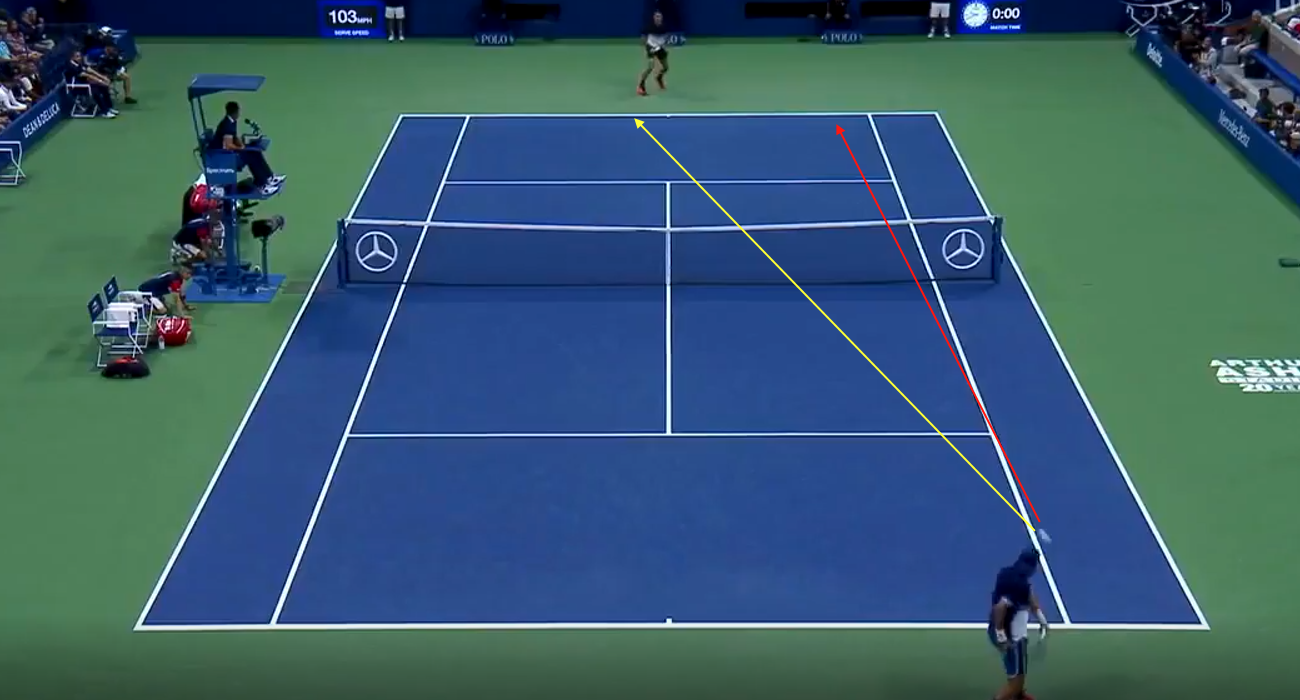
Lopez is now faced with two choices. He knows that staying on a cross-court rally with Federer’s forehand isn’t a great proposition for him. However if he plays down the line along the red line that represents some of its own problems. First is the prospect of just making an unforced error – the court is shorter down the line and the net is higher. Secondly, even if he gets it there, he’s played himself out of position – Federer could then drive his own backhand cross court into open space. For Lopez to go down the line his quality of shot would have to be very high, and the backhand is his weakest side. So he makes the safer play, and follows the yellow line back into Federer’s forehand. It’s not a great choice, but it is the best choice available.
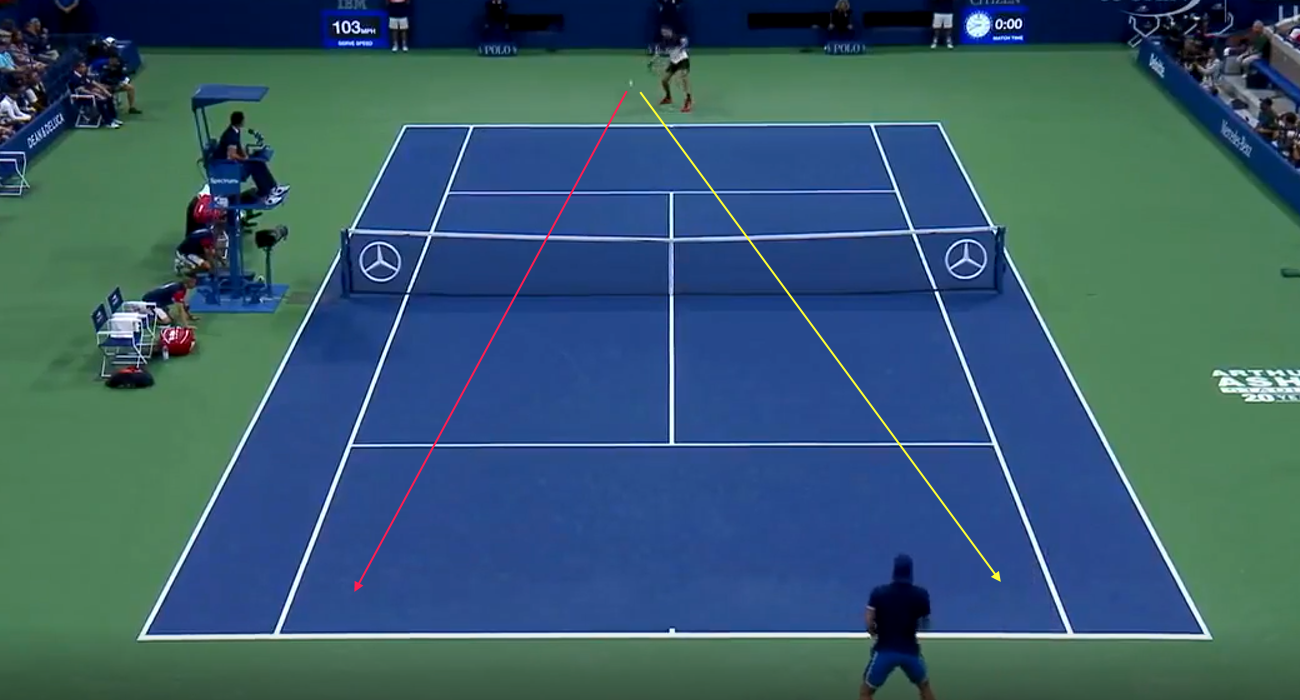
Lopez plays it smart though – remember his goal is to get a forehand of his own. The wider he takes Federer, the easier it is for Federer to keep driving his forehand into Lopez’s backhand. So Feliciano plays the ball more centrally – it cuts down on Federer’s angles, although not without risk. If Lopez doesn’t get the depth on this ball, then he’s in real trouble – Federer has all the options available to him. The depth is there though, and we can see that again Federer is on his back foot, several feet behind the baseline. Again of the two options, the yellow line is Federer’s best bet – he cannot easily get both pace and accuracy from his current position and so hitting the red line gives up the initiative. He plays yellow.
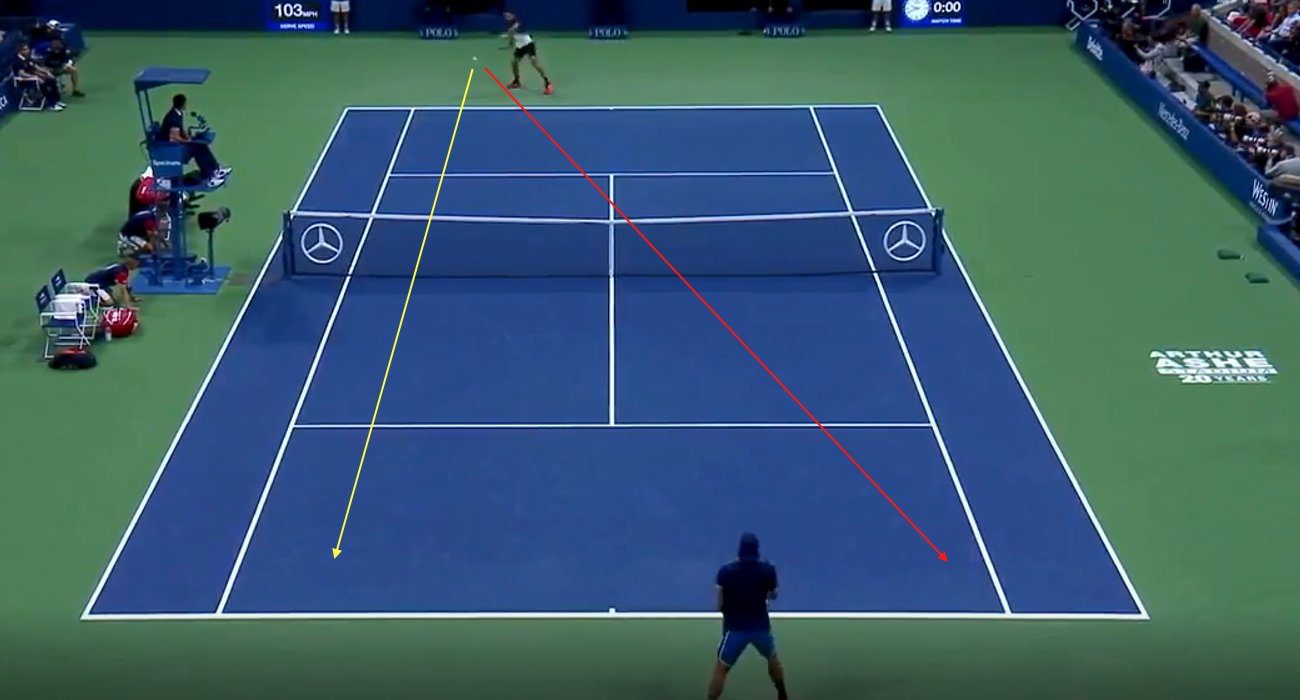
Lopez’s next backhand doesn’t have as much depth as the previous two balls, and now Federer begins to feel like he can be more aggressive. Here Roger makes his first mistake of the rally. Federer’s first two forehands into Lopez’s backhand were neutral balls. They were neither offensive nor defensive. But Lopez has now given Federer what we would consider a small advantage in the point – a forehand he can hit with more power and depth. The right play here is for Federer to follow the red line, and hit back into Lopez’s backhand again but a better quality ball than the previous two. To leverage that small advantage and turn it into a big advantage.
Instead Federer follows the yellow line. He’s impatient. The ball doesn’t have enough on it – not enough pace, enough depth, enough spin. Federer has given Lopez the forehand that he’s been waiting for. It isn’t a big mistake – Roger has taken his small advantage and turned it into a small advantage for Lopez. Feliciano doesn’t have Roger’s game – he knows he must take advantage and he gets right to work.
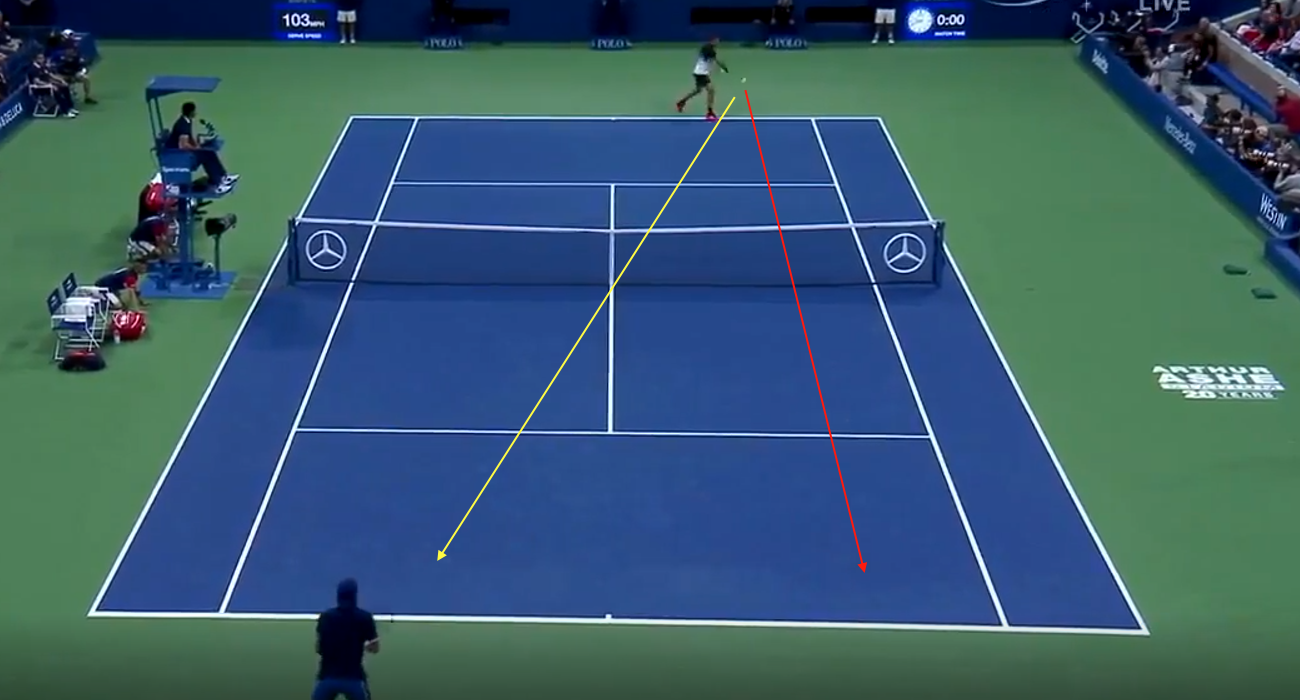
Lopez’s first ball cross court is a good ball but not a great one. Federer is able to take the backhand relatively early, and he’s balanced – you can see from Federer’s stance that he is not on the defense. This is where Federer makes his second error of the point. Roger should take his backhand immediately down the line, and put the pressure back on Lopez’s backhand. This shifts play in the direction Roger wants it to be in, and creates more forehand opportunities for him. Roger doesn’t do this however. He takes the ball back cross-court, and gives Feliciano another forehand.
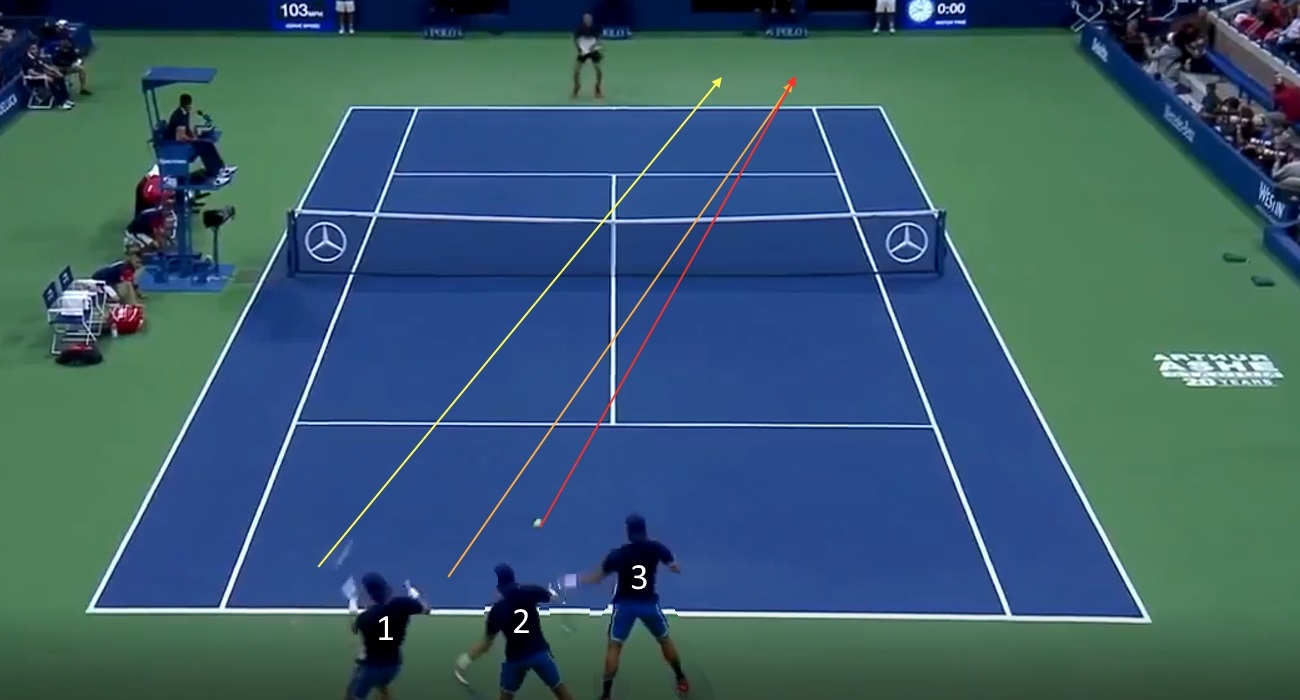
Lopez hits three forehands in a row into Federer’s backhand. Each one is better than the one before it, and as we can see with each one Lopez improves his court positioning. The first one Federer hit reasonably well, but Lopez didn’t let up. The second Federer backhand was more defensive, and Lopez used the weaker reply to hit yet another, more aggressive forehand at Federer’s backhand. In three shots Federer has gone from a slight advantage to being in real trouble in this point. Roger is scrambling to hit a slice backhand off a ball from Lopez that has a lot of pace and weight on it.
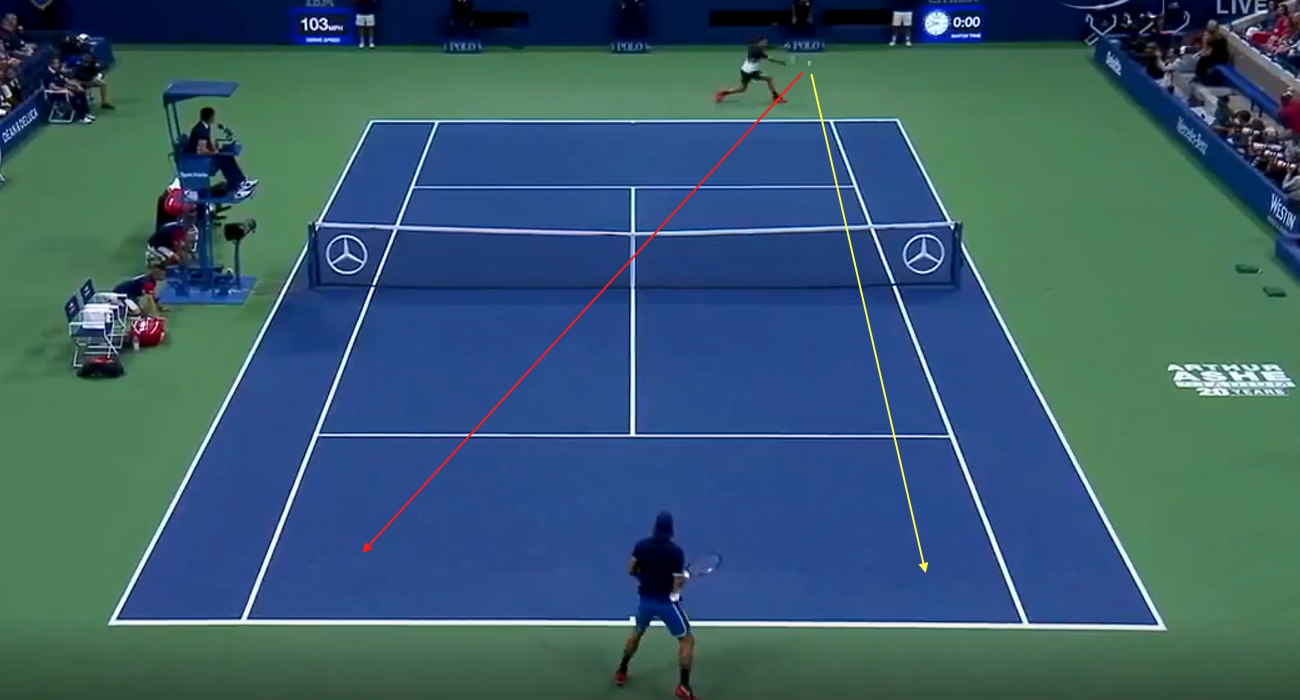
This is where most players lose the point. Roger Federer is not most players. Federer has made two directional errors – shifting play off the Lopez backhand too early, and then not shifting it back onto the Lopez backhand at the first good opportunity. By rights Roger Federer should lose this point. Instead he hits a shot most people could not. While scrambling and on defense, Roger hits a short backhand slice down the line into Lopez’s backhand. Simply getting play onto Lopez’s backhand at this point would be good, but Roger does one better than that. He completely shifts the rally with one shot.
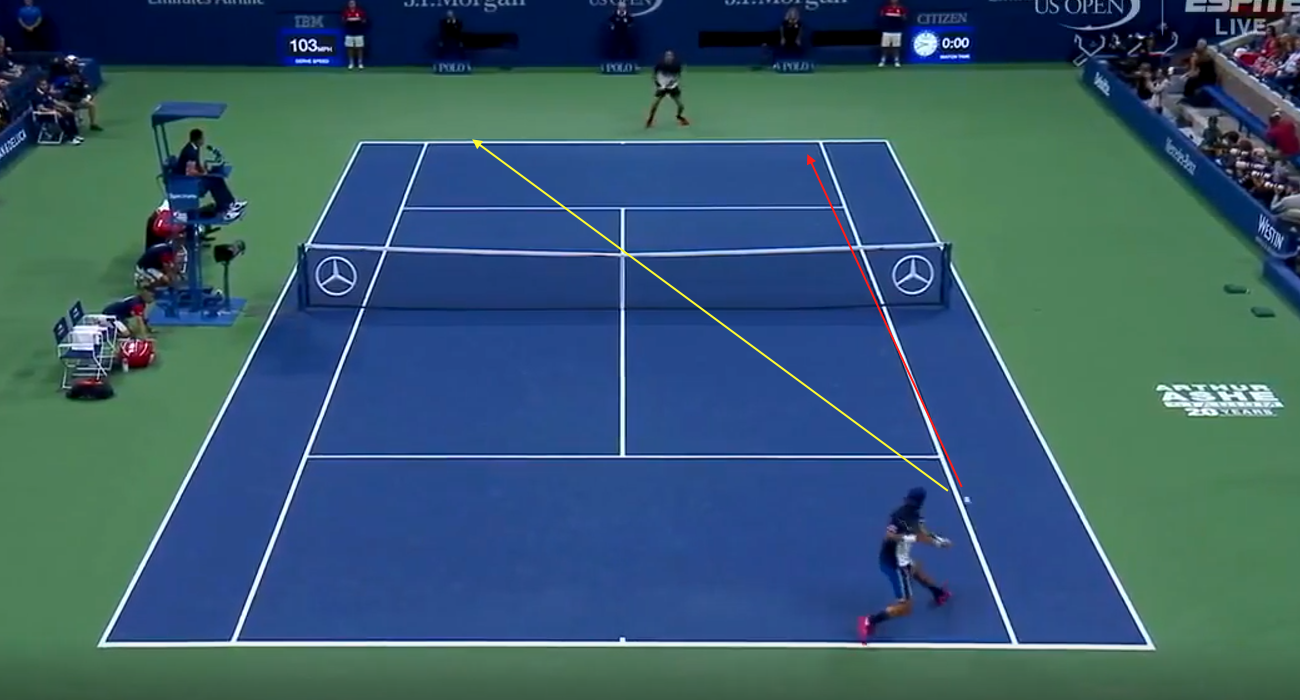
If Federer’s ball had been deeper, Lopez likely would have played a deep cross-court ball. In this case Federer would have taken his big disadvantage in the rally and turned it into either a neutral position or a small advantage for himself. But note how short in the court Lopez is now. Feliciano has gone from cracking a good forehand in the court center, to running forward and wide to dig out a low slice on his next ball. Lopez is now in trouble – big trouble. He cannot be aggressive off this slice, and he has two options. He can play a high risk slice down the line, or take the higher percentage slice cross court into the danger zone – Federer’s forehand.
This should remind us of the very first backhand Lopez hit after the return, when he was faced with a similar choice. That time, Lopez chose the safe option and stayed fairly safe in the point. The problem for Feliciano is that there is a very real positioning difference this time around. Because Lopez is inside the baseline, his ability to recover properly is compromised. He tries the safe play cross-court, and hits the ball reasonably well under the circumstances, but it is not enough.
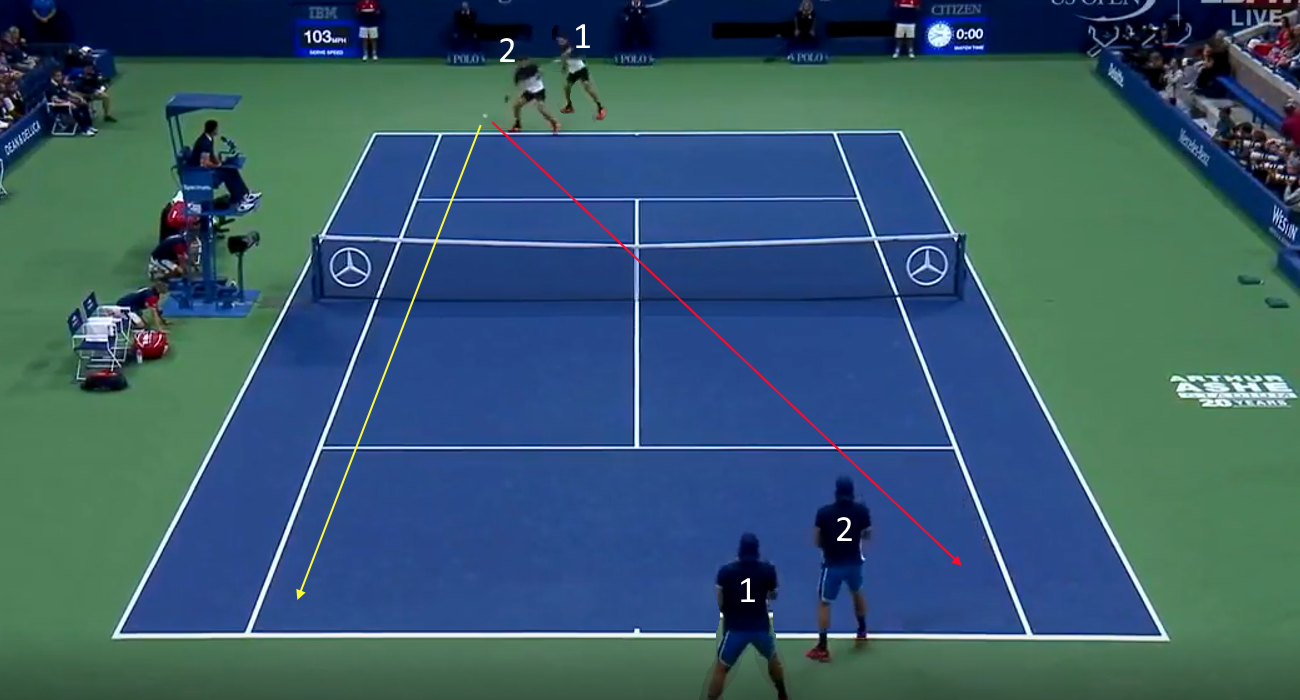
When we superimpose the first situation over the second, we can quickly see why they turn out so differently. The first time Federer took his forehand down the line (labeled 1), Lopez is in a more central position, but perhaps more importantly he is deeper in the court. This means Lopez has more time to get sideways and get behind the ball to hit the forehand. The second time around, Lopez is recovering from Federer’s short slice. He doesn’t make it back deep enough before Federer strikes the ball. Note that Fed is hugging the baseline the second time around, taking even more time away from Lopez. Feliciano must respect the possibility that Federer takes the ball back cross court – he has to respect the red line. So when Roger pulls the trigger on the yellow line, there is just too much ground to cover, and not enough time to cover it in.
The result is a forced error, a ball that Lopez barely reaches and has no real chance to get back in play.
Summary
Federer made two small errors in this point, giving up the initiative in the process. Lopez did his best to turn this small advantage into a large one, and did his job well. Federer had to reach into his bag of tricks, and make a relatively low percentage play in order to turn the tables on his opponent.
How does this apply to your own game? Do you pull the trigger too quickly in points? One of the most common errors from players is choosing shots as though they have a large advantage, when in truth they only have a small one. Being able to recognize the difference, and when to change the direction of play is a critical skill at all levels. Better choices, better results. Go get it!

